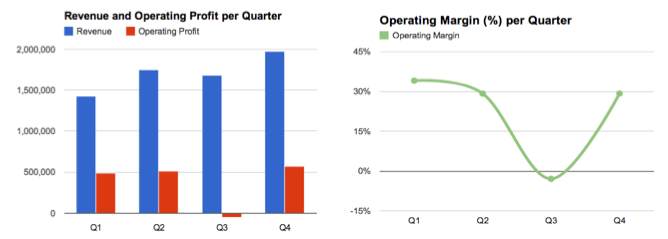Operating profit is reported income after revenues and expenses for the company's normal operating business have been subtracted, but before factoring in the contributions of financial income, financial expenses, extraordinary items, and taxes. It differs from gross profit in that all the operating expenses such as legal and distribution expenses are included.
For the business founders and owners, operating profit represents what is available to them before a few financial items need to be paid out including preferred stock dividends and taxes. Generally though, ample operating profit shows that your company is either well run with the right amount of cost controls, or that competitive forces are weak against your offering. Strong operating profits also enable the use of capital to do more whether it is adding features to your software application or making you checking process more seamless. Note: when looking at analytics for operating profit, it is important to keep in mind that this metric can fluctuate widely especially for companies impacted by seasonality.
Operating profit expressed as a percentage of net sales revenues is referred to as operating margin, a measurement for management’s efficiency and quality of a company’s activities against its competitors. If your business is going high volume and low cost, then operational margins should be on your list. Note: this metric can be skewed by showing strong margins that came by taking on significant debt, which puts the business at risk.

Many analysts and business owners alike call operating profit among the key business metrics to evaluate a company’s performance. Visualizations can be evaluated by looking a revenue next to operating profit or a trend line showing operating margin.
No comments:
Post a Comment